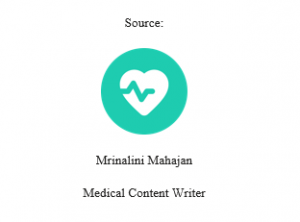In recent years, the healthcare industry has witnessed a remarkable transformation with the rapid advancement of technology. HealthTech and MedTech, the convergence of healthcare and technology, have paved the way for innovative solutions that enhance patient care, improve efficiency, and revolutionize the overall healthcare experience.
Let us explore some of the most prominent emerging trends in HealthTech and MedTech that are shaping the future of healthcare:
Artificial Intelligence and Machine Learning:
Artificial Intelligence (AI) and Machine Learning (ML) have emerged as a game-changers in the healthcare industry. These technologies have the potential to analyse vast amounts of medical data, provide accurate diagnoses, and identify patterns that humans may overlook. AI-powered chatbots and virtual assistants are improving patient engagement and streamlining administrative tasks. ML algorithms are being developed to predict disease progression and personalize treatment plans, leading to more effective outcomes.
Internet of Medical Things (IoMT):
The Internet of Medical Things (IoMT) refers to the interconnected network of medical devices and healthcare systems. IoMT devices, such as wearables and remote monitoring systems, collect real-time patient data and transmit it securely to healthcare providers. This data-driven approach enables proactive and remote patient monitoring, early detection of health issues, and personalized care. IoMT also plays a crucial role in telemedicine, enabling virtual consultations and remote healthcare delivery, especially in rural and underserved areas.
Telemedicine and Telehealth:
Telemedicine has gained significant momentum in recent years, and the COVID-19 pandemic further accelerated its adoption. Telemedicine allows patients to consult with healthcare professionals remotely through video conferencing, phone calls, or secure messaging platforms. It eliminates geographical barriers, reduces wait times, and enhances access to healthcare services. Telehealth solutions also extend to remote patient monitoring, digital health platforms, and mobile health apps, empowering individuals to take charge of their health and well-being.
Blockchain Technology:
Blockchain technology has the potential to revolutionize healthcare data management and security. With its decentralized and transparent nature, blockchain ensures the integrity and privacy of sensitive patient data. It enables secure sharing of electronic health records (EHRs) among healthcare providers, streamlines the authentication of medical credentials, and facilitates clinical trials and research collaborations. Additionally, blockchain-powered smart contracts can automate and streamline healthcare processes, improving efficiency and reducing costs.
Virtual Reality (VR) and Augmented Reality (AR):
Virtual Reality (VR) and Augmented Reality (AR) are making their mark in medical training, patient education, and therapy. VR simulations allow medical students and professionals to practice surgical procedures in a safe and controlled environment, enhancing their skills and reducing the risk of errors. AR overlays digital information onto the real world, providing physicians with real-time patient data during surgeries and assisting in precise diagnoses. VR and AR applications are also being used for pain management, rehabilitation, and mental health treatments.
Conclusion:
The emerging trends in HealthTech and MedTech are reshaping the healthcare landscape, offering immense potential for improved patient outcomes, increased efficiency, and enhanced access to care. Artificial Intelligence, Internet of Medical Things, Telemedicine, Blockchain, and Virtual/Augmented Reality are just a few examples of the transformative technologies that are revolutionizing healthcare delivery. As these trends continue to evolve, it is essential for healthcare professionals, and industry leaders to embrace innovation and leverage technology to build a patient-centric and digitally-driven healthcare ecosystem.

